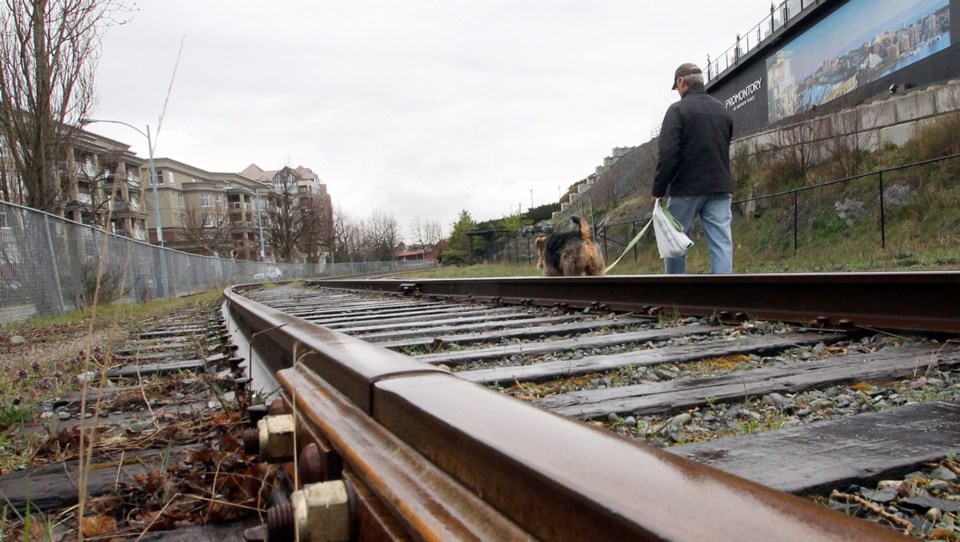Langford Mayor Stew Young is demanding the Island Corridor Foundation open its financial books after his municipality was hit with a $50,000 fee from the foundation.
The fee came after Langford denied a “permissive tax exemption” to the ICF, a coalition of local governments and First Nation communities that owns the E&N rail line from Victoria to Courtenay. No passenger trains have run on the line since 2011, when tracks were deemed unsafe because of inadequate maintenance.
Young said since no train is running, he’s not sure it’s legal to give the ICF a tax exemption.
“Our bylaw says that you can give a permissive tax exemption if there’s a benefit to the people. But there actually hasn’t been a benefit to the people for the last four years, because there hasn’t been a train running,” said Young, adding he wants to examine the foundation’s revenue. “Maybe they can shave some costs and not charge me these fees.”
The foundation says on its website that its revenue comes from land-use rents, including crossing agreements and licences of occupation.
All other municipalities along the corridor have granted the ICF a permissive tax exemption, said CEO Graham Bruce. If they don’t, he said, “we’ve got to ensure the integrity of that property is being maintained and it can’t go up for tax sale purposes.
“So to make sure that doesn’t happen, we charge a land-use fee. If there’s a property-tax exemption in place, then there’s no land-use fee.”
The foundation charged the $50,000 fee because Langford wants to build a two-way bike path about 225 metres long on the lower side of Atkins Road to provide a connection to future E&N Rail Trail improvements and the Galloping Goose trail. About half the proposed bike trail is in the ICF right of way.
In a letter to the foundation’s board of directors, Young says that in October, after meeting with the ICF and rail operator Southern Rail, the municipality paid a $2,000 file-opening fee to the ICF and a $3,500 engineering review fee to Southern Rail.
In addition, Langford hired a consultant to undertake a rail-crossing assessment. After submitting revised plans in January, they were told by Bruce that in order to proceed, they would have to provide a detailed engineering design of a future road crossing, a $2,100 review fee, a $3,000 to $5,000 deposit for a legal survey for the bike lane and a $50,000 fee for the right to construct the bike lane in the ICF right of way.
In a letter to the foundation’s board, Young made several of his own demands, including that ICF reduce and standardize fees charged to municipalities, undertake a review of its employee salaries and contractors, have a more open, transparent public process, audit expenses and revenue claimed by Bruce, and provide the public a timeline of when and if the train will start operating again.
ICF chairman Bill McKay responded in a letter that the board has struck a sub-committee to meet with Young and that Bruce has the board’s full confidence.
Young said it’s frustrating that “there’s no train running, but there’s a bureaucracy attached to no train running.”
“I think that because we’re a member of the corridor and there’s no train running and there’s no guarantee a train will run, we really need to look at what’s our budget on the Island Corridor to manage this,” Young said.
Bruce would not speculate on when passenger rail service would return to the line. ICF was waiting for final sign-off from Infrastructure Canada for $7.5 million in promised funding to upgrade the line when the Nanoose First Nation filed a civil claim seeking a 10.8-acre parcel of land that the E&N rail line runs through.
“That, of course, put the red flag on the infrastructure application. We’re hoping to find a way to resolve it,” Bruce said.



